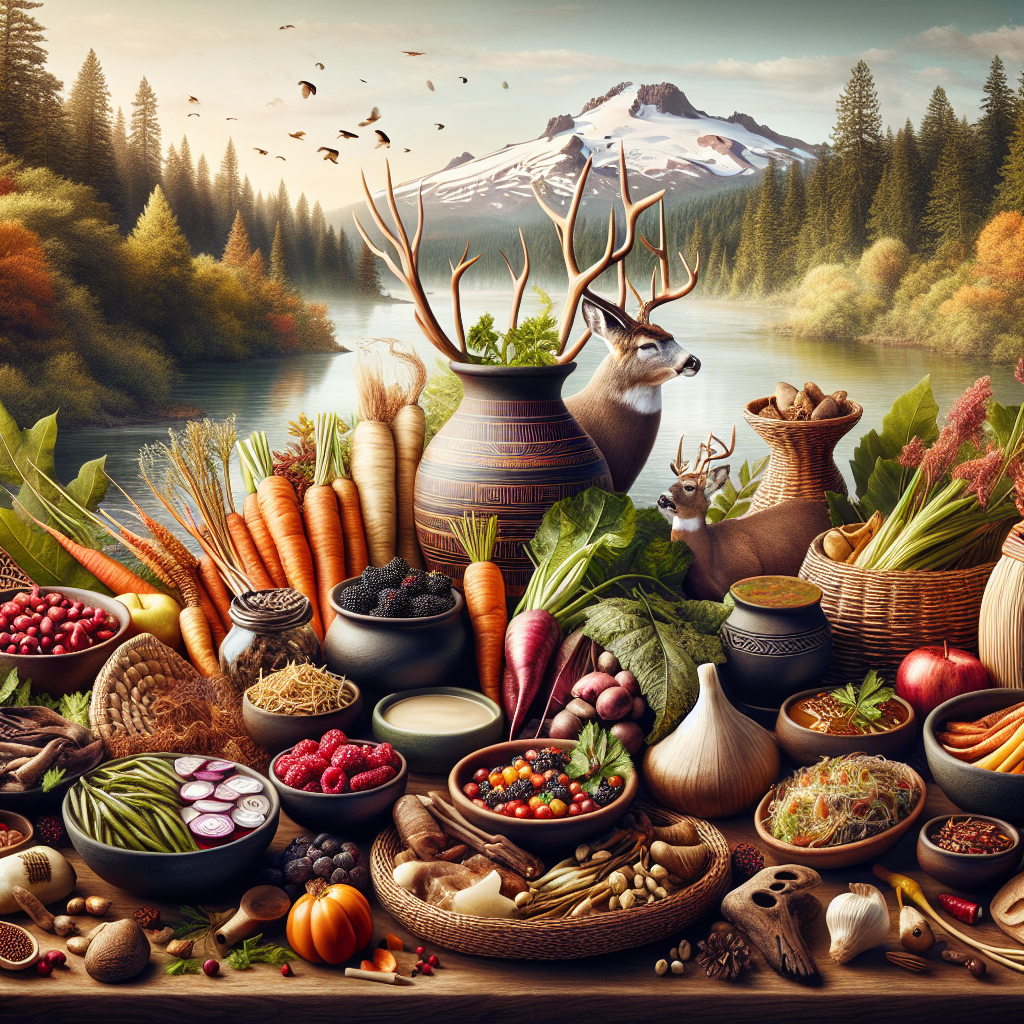A Culinary Walk to the Past: Traditional Indigenous Foods of Oregon
As the foggy morning mist rolls over the mighty Mt. Hood and the sun casts its ethereal glow upon the Willamette River, it’s not just another ordinary day in Oregon. Instead, it is a promising day of exploration into the heart of its incredible indigenous culinary heritage. You see, Oregon’s history cannot be considered complete without the fundamental acknowledgment of its Native American roots, of which food forms an integral part.
The Storied Land & Its Abundant Resources
For generations, Oregon’s verdant landscape has provided a continuous bounty to the indigenous tribes that have survived and thrived here. From the lush Willamette Valley, flanked by the Coast and Cascade Mountains, to the rugged splendor of the Eastern Oregon high desert, every nook employs a distinctive blend of elements making the Beaver State a wild pantry for its indigenous communities. Our car license plates say “Pacific Wonderland,” which hits just right when it comes to describing our diverse and bountiful land.
Fishing: The Heartbeat of Indigenous Communities

The indigenous tribes of Oregon have always been deeply connected to water. Rivers such as the Columbia, Willamette, Umpqua, and Rogue have functioned as essential lifelines, providing salmon, steelhead, and lamprey eels, which are cornerstones of their traditional diets.
In the quaint historic town of Celilo Village, nestled along the picturesque Columbia River, the art of dip-net fishing is practiced even today, much as it was by their ancestors. The iconic Celilo Falls may be silenced now, but the waters continue to yield treasures that find their way to modern indigenous tables, reminding us of the river’s age-old generosity.
Berries & Roots: Oregon’s Wild Harvest
The gorgeous huckleberries from the mighty Mount Adams or delicious camas bulbs from southern Willamette Valley are no strangers to the taste buds of Oregon’s indigenous folks. In fact, native plants like wapato and cattails that bear significance in traditional food practices are humorously referred to as “groceries under water.” Similarly, the tart Oregon grape and tangy salmonberries, plucked straight off their branches, have woven a rich tapestry of flavors traditionally savored by local tribes.
Hunt with Huntsman’s Tradition
Traditional hunting techniques honed by these communities over centuries continue to be in practice, emphasizing not just the procurement of food but also the practice of respect for nature. The Nez Perce tribe, for instance, follows a unique tradition of the “first hunt,” where the success of a young huntsman, often chasing after deer in the Blue Mountains or the Elkhorns, is celebrated with community feasts. Deer, elk, and small game like rabbits have been hunted and utilized fully, proving that ‘nose-to-tail’ eating is not just a new-age trend, but a longstanding respectful principle of indigenous cuisine.
Oregon’s Tribal Food Revival
In the last couple of decades, there has been a welcome resurgence in the interest and appreciation towards tribal food. Modern-day ambassadors of indigenous traditions like ‘Chef Jack Strong’ from Siletz tribe, put their heart and soul into not only preparing authentic, traditional tribal dishes at their restaurant, ‘Chinook Winds,’ but also imbuing a sense of history and pride into every morsel.
A Toast to the Oregon Hop
While wine tours might dominate conversations about Oregon’s specialties, the indigenous tribes have a love affair with brewing too. Think not just of columns of IPAs, but brews teeming with the distinctive, natural flavors of Oregon like yarrow, vanilla leaf, and even locally harvested spruce tips. Truly giving credence to the local saying ‘drink local, think seasonal’.
In conclusion, exploring Oregon’s indigenous foods provides a richly textured insight into the history and culture of the state’s earliest inhabitants. These food traditions reflect not just the state’s vibrant and diverse ecology, but also the evolving narrative of its people who consider the land not merely a source of sustenance but a sacred space that promoties spiritual and cultural growth. So next time you’re passing by the huckleberry stands at the PSU farmer’s market, try a handful and you might just experience a taste of Oregon’s long-standing indigenous heritage.
